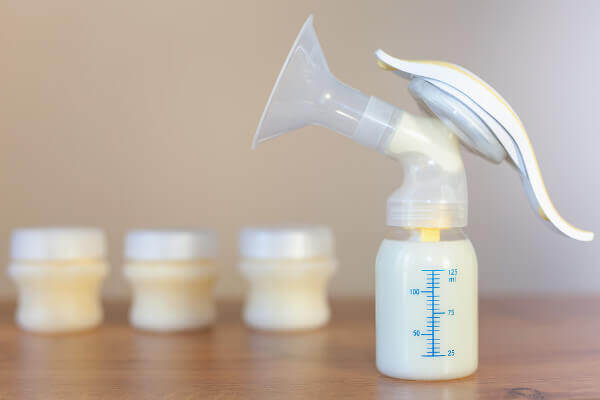Returning to Work and Continuing to Breastfeed

Returning to work and continuing to breastfeed is a way to maintain the close relationship you’ve developed during the first months of life with your baby.
It also provides greater comfort and safety. Keep in mind that breast milk protects babies against infection.
Breastfed children are significantly less likely to suffer from serious diseases, such as gastroenteritis, respiratory infections, urinary tract infections or ear infections.
In addition, breastfeeding also protects the mother’s health. Mothers who breastfeed are less likely to develop breast cancer, some forms of ovarian cancer and hip fractures as a result of osteoporosis in old age.
Despite the benefits of breastfeeding, sometimes it isn’t easy to combine it with professional life.
Most mothers who feel unhappy about leaving their babies when they return to work reveal that continuing to breastfeed helps them better cope with the problem.
In that sense, returning to work may be the first time that you separate from your child for extended periods of time, which means it’s a difficult time for both you and your baby.
Breastfeeding is the bond of love that makes our children healthy, strong and happy.
-Montserrat Caraccioli-
5 tips for returning to work and continuing breastfeeding
Below you’ll find useful 5 tips if you want to return to work and continue breastfeeding:
1. Begin to bottle feed your baby from a young age.
Many breastfeeding mothers make the mistake of not giving their babies a bottle until they return to work. You must accustom your child to using a bottle from an early age.
Most experts recommend introducing one with expressed breast milk at approximately 3 weeks of age, when breastfeeding is firmly established.
2. Get your milk pump
To give your baby a bottle of breast milk, you must first extract that milk, usually with a milk pump.
The best time to do it is usually right after the first breastfeeding session of the day, when the milk supply is at its highest point.
When you’ve finished pumping, you should store the milk in the refrigerator or freezer. It will stay fresh for five days in the refrigerator and for five months in the freezer.
Be sure to use storage bags made especially for breast milk, as they’re disinfected, freezer safe and leak proof.
3. Find a suitable place to pump at work
Normally, large companies have a private space in which you can extract milk. In the event that you work for a smaller company, you may need to be creative to find a space.
Whether in an intimate space or the bathroom, you must ensure that it’s as hygienic as possible. In these cases, antibacterial wipes will be very useful.
4. Ease of return to work
For working mothers, the first week of returning to work is the most complicated due to being separated from the baby.
In that case, it’s good that you try to talk with your company to assess ways to facilitate the transition.

5. Schedule your breastfeeding and pumping times
During working hours, experts suggest that mothers should breastfeed before going to work and again when they get home, in addition to any other occasion in which the baby wants it.
At work, you can try to express milk at the times you would normally breastfeed, either two or three times a day.
6. Plan ahead and have the right equipment on hand
Planning is important to return to work and continue breastfeeding. In that sense, you should make sure you always carry your milk pump with you so that you can make extractions during the work day.
We recommend you follow the advice above to make it much easier to return to work and continue breastfeeding.
Many mothers believe that this separation represents the end of breastfeeding, but as you’ve seen, good organization and the desire to continue doing so will allow it to be possible.
This text is provided for informational purposes only and does not replace consultation with a professional. If in doubt, consult your specialist.








